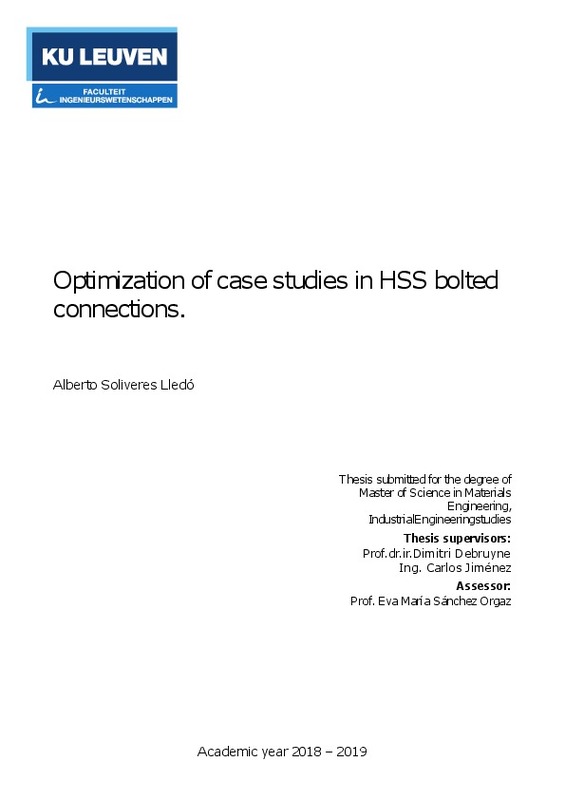|
[EN] The aim of the project is the definition, analytical study and test validation of a
complex load bolted connection in HSS.
Steel is a widely used and developed alloy due to its high tensile strength and
low cost, ...[+]
[EN] The aim of the project is the definition, analytical study and test validation of a
complex load bolted connection in HSS.
Steel is a widely used and developed alloy due to its high tensile strength and
low cost, proprieties which, makes it a perfect material for multiple purposes: from
machine construction, auto mobiles and tools to be a crucial part in buildings and
infrastructures.
Despite all the improvements made in the steel alloys the mechanical failure of the
components is still happening this days, and in some cases this failure is accompanied
with human and economical losses. That is why the study of steel mechanical failure
is so important. To prevent the material failure a deep understanding of the machine
operation modes is needed, that is why the evaluation of steel behaviour of the
components and its operation modes is so important.
The objective is to determine a joint that allows a failure mode originated by a
complex loads set. This is why a design capable of being tested under the combined
action of bending efforts and shear stress conditions is built.
This union, subjected to a complex state of loads is motivated by the determination
of which is the crucial failure mode in the elements subjected to several loading
conditions. A union is presented in which the influence of the bending stresses and
surface fretting conditions can be modified by a parameter variation as it is the
joining angle between the models.
The increase or decrease of this joining angle is set to show different load conditions
in the contact interface. This approach means to represent a design precedent and to
establish design lines in the bolted connection construction under a load combination.
To perform this investigation a parametric study of different joint set-up under
this load combined conditions is carried out with the aim of evaluating this fracture
mechanism. In this study the finite element approach is used in order to analyse a
variety of test specimens.
Finally a good correspondence is found between the analytical model, the test
results and the DIC which which endorses the model definition and allows it to be
used for the validation of other case studies.
[-]
[ES] El proyecto consiste en el análisis a fatiga del comportamiento de placas de acero de alta resistencia unidas mediante uniones atornilladas y sometidas a un esfuerzo combinado de tracción y doblado. Estos tipos de ...[+]
[ES] El proyecto consiste en el análisis a fatiga del comportamiento de placas de acero de alta resistencia unidas mediante uniones atornilladas y sometidas a un esfuerzo combinado de tracción y doblado. Estos tipos de uniones son muy comunes en los camiones y se quiere estudiar su comportamiento para esta aplicación.
La implantación de aceros de alta resistencia en reemplazo de las aleaciones tradicionales de acero para la construcción de los bastidores de los camiones y vehículos pesados se traduce en una estructura más ligera con la misma resistencia, esto conlleva beneficios tales como:
-Aumento en la carga transportable
-Reducción de las cargas inducidas por la propia estructura
-Reducción en el consumo de gasolina
EL problema lo tenemos en los métodos de unión de traviesas y largueros en la construcción de estos bastidores. Se ha demostrado que el acero de altar resistencia soldado presenta malos resultados en vida a fatiga y los tratamientos post soldadura son extremadamente costosos.
Es en este punto donde aparecen las uniones atornilladas, se plantea la transferencia de estas uniones soldadas a uniones atornilladas para analizar si se incrementa la vida a fatiga en las mismas.
[-]
|







